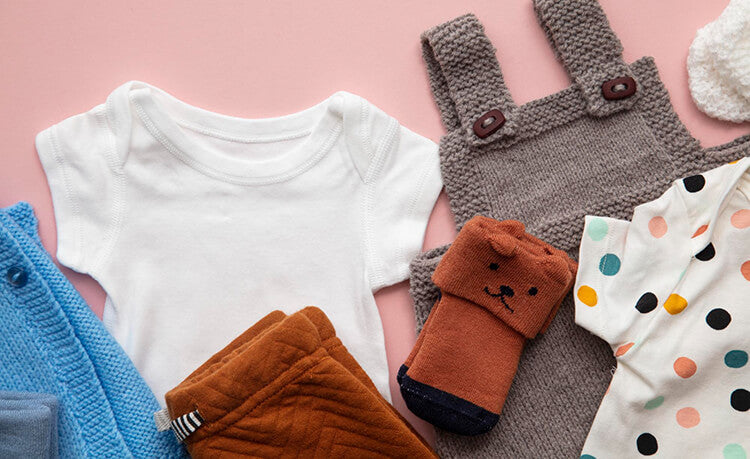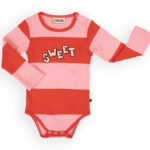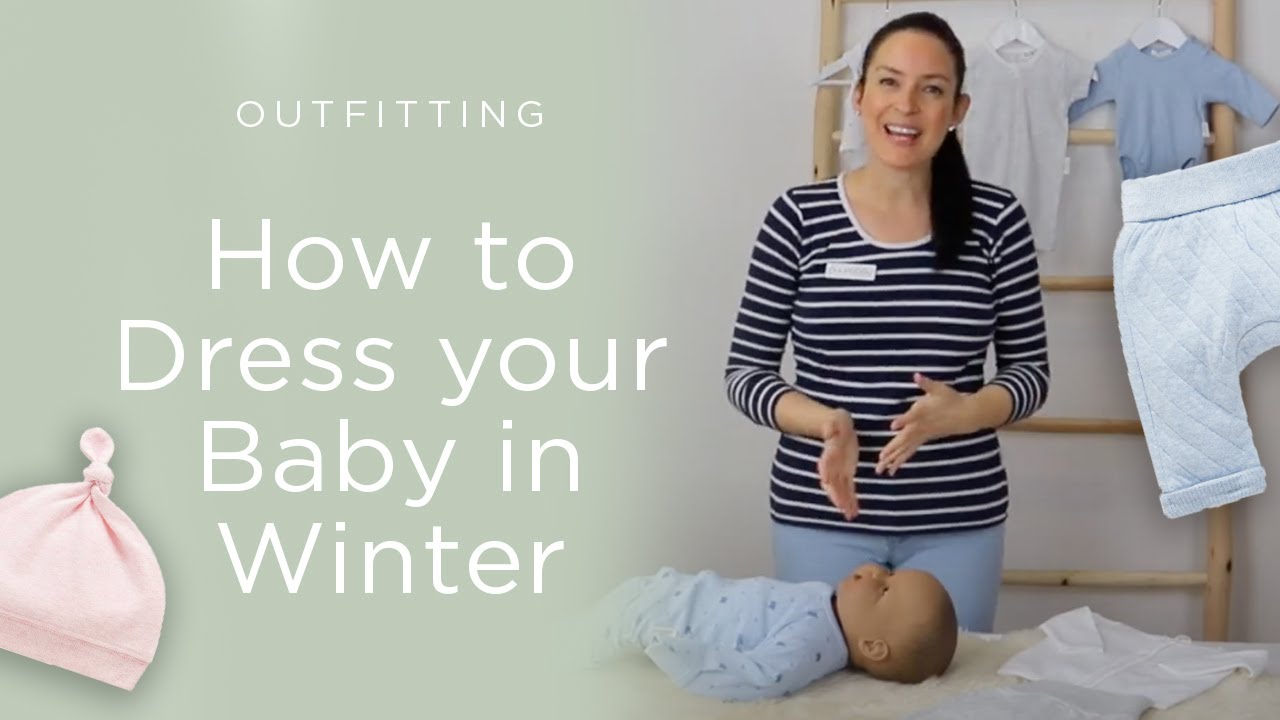Choosing the right fabric for newborn clothing is crucial. Babies have delicate skin that needs gentle care.
Finding the best fabrics ensures comfort and safety for your little one. Newborns spend most of their time sleeping or resting, so soft, breathable materials are essential. Parents often wonder which fabrics are the safest and most comfortable. From organic cotton to bamboo, the variety can be overwhelming.
This guide will help you navigate the options, offering insights into the best choices for your baby’s sensitive skin. By understanding the benefits of different fabrics, you can make informed decisions that keep your newborn cozy and happy. Let’s dive into the world of baby-friendly fabrics and discover the best ones for your precious bundle of joy.
Cotton
Cotton is a popular choice for newborn clothing. Its softness and breathability make it ideal for delicate baby skin. Parents often prefer cotton due to its natural and hypoallergenic properties.
Benefits Of Cotton
Cotton is gentle on a baby’s sensitive skin. It reduces the risk of irritation and rashes. Cotton fabric is breathable, allowing air to circulate. This keeps the baby cool and comfortable. Cotton clothing is also durable and easy to wash. It can withstand frequent laundering without losing its softness.
Organic Cotton Options
Organic cotton is grown without harmful chemicals. This makes it safer for newborns. It is also environmentally friendly. Choosing organic cotton helps support sustainable farming practices. Many brands offer organic cotton baby clothes. These options are gentle on the skin and eco-friendly.
Bamboo
Bamboo fabric is becoming a popular choice for newborn clothing. Soft, breathable, and gentle on delicate skin, it offers many benefits. Parents are increasingly considering bamboo for their little ones.
Why Choose Bamboo
Bamboo fabric is incredibly soft. It feels like silk but is much more affordable. Newborns have sensitive skin, and bamboo is gentle and non-irritating. This makes it ideal for baby clothes.
Bamboo is also highly breathable. It helps regulate your baby’s temperature. The fabric wicks away moisture, keeping the baby dry and comfortable. This is especially important during hot and humid weather.
Another advantage of bamboo is its durability. Despite being soft, bamboo fabric is strong and long-lasting. It can withstand many washes, which is essential for baby clothes that need frequent cleaning.
Eco-friendly Aspects
Bamboo is a sustainable resource. It grows quickly and does not need pesticides. This makes it an eco-friendly option. Choosing bamboo clothes helps reduce your carbon footprint.
Producing bamboo fabric uses less water than cotton. This conservation of water is crucial for our environment. Every small step counts towards a greener planet.
Bamboo plants also produce more oxygen than trees. They help improve air quality. By choosing bamboo, you support a healthier planet for future generations.
Muslin
Muslin is a popular choice for newborn clothing. It is lightweight and breathable, making it perfect for a baby’s sensitive skin. Parents favor muslin for its softness and versatility.
Softness And Breathability
Muslin offers a soft touch that is gentle on newborn skin. The fabric allows air to flow through, which helps prevent overheating. Babies stay comfortable and cool in muslin clothing. This makes it a top choice for summer wear.
Ideal Uses For Muslin
Muslin is perfect for baby swaddles. It wraps babies snugly while letting their skin breathe. Many parents also use muslin for burp cloths. The fabric is absorbent and easy to clean. Muslin blankets are another common use. They provide warmth without causing discomfort. Muslin is also used for baby clothes like onesies and dresses. Its softness ensures a cozy fit for newborns.
Merino Wool
Choosing the right fabric for newborn clothing is essential. Merino wool is a top choice for many parents. It offers exceptional comfort and warmth. This natural fiber comes from Merino sheep. It’s soft, breathable, and perfect for delicate newborn skin.
Temperature Regulation
Merino wool helps in temperature regulation. It keeps babies warm in winter and cool in summer. The fabric breathes well. It absorbs moisture, keeping the skin dry. This helps in preventing overheating. Babies stay comfortable in all seasons.
Gentleness On Skin
Merino wool is known for its gentleness on skin. It feels soft and smooth. It doesn’t cause irritation. This makes it suitable for sensitive newborn skin. The fibers are fine and flexible. They don’t itch or scratch.
Below is a comparison of Merino wool with other common fabrics for newborns:
| Fabric | Temperature Regulation | Gentleness |
|---|---|---|
| Merino Wool | Excellent | Very Gentle |
| Cotton | Good | Gentle |
| Bamboo | Good | Very Gentle |
Parents often choose Merino wool for these reasons. It ensures babies are comfortable and happy. The natural properties of this fabric make it ideal for newborns.
Fleece
Fleece is a popular choice for newborn clothing. It is soft, warm, and very comfortable. Many parents prefer fleece fabric for their baby’s wardrobe. This material provides the necessary warmth and coziness for little ones.
Warmth And Comfort
Fleece offers excellent warmth. It traps heat, keeping your baby warm. This is crucial during cold weather. Babies can’t regulate their body temperature well. Fleece is also very soft. It feels gentle against a newborn’s skin. This makes it a comfortable choice. Babies need fabrics that don’t irritate their skin.
Choosing Safe Fleece
Safety is important in baby clothing. Choose fleece that is free from harmful chemicals. Look for certifications like OEKO-TEX. This ensures the fabric is safe. Also, check for hypoallergenic properties. Some fleeces can cause allergies. It’s best to choose one that is hypoallergenic. Avoid fleece with loose fibers. These can pose a choking hazard.
Jersey Knit
Jersey knit fabric is a popular choice for newborn clothing. It is soft, stretchy, and comfortable. This fabric offers many benefits for little ones. Let’s explore why jersey knit is a great option for newborns.
Stretch And Flexibility
Jersey knit is known for its stretch and flexibility. These features make it perfect for babies. The fabric can move with your baby. It won’t restrict their movements. Babies are always on the move. Stretchy fabric ensures they stay comfortable. It also helps with easy dressing and undressing.
Best Uses For Jersey Knit
Jersey knit is versatile. It is ideal for many types of baby clothing. Bodysuits and onesies are common uses. They provide comfort and ease of movement. Pajamas made from jersey knit are cozy and soft. The fabric’s breathability keeps babies comfortable all night. Baby hats and mittens also benefit from jersey knit. They stretch to fit snugly without being too tight. Blankets made from jersey knit are lightweight and warm. Perfect for swaddling your newborn.
Velour
When it comes to choosing the best fabrics for newborn clothing, velour stands out as a luxurious and soft option. This fabric is not only gentle on a baby’s delicate skin but also adds a touch of elegance to their wardrobe. Let’s dive into the unique qualities of velour and discover when it’s best to use this fabric for your little one.
Luxurious Feel
Velour offers a luxurious feel that is unmatched by many other fabrics. It has a plush texture that feels soft and smooth against the skin. This makes it perfect for newborns who need the softest materials to keep them comfortable. The fabric’s pile creates a velvety surface, giving it a rich and opulent look.
Parents often choose velour for special occasions or when they want their baby to look extra adorable. The fabric’s sheen adds a subtle shine, making it a great choice for both casual and formal baby outfits. Velour is also known for its durability, ensuring that the clothing will last through multiple washes and wears.
When To Use Velour
Velour is versatile and can be used in various types of newborn clothing. Here are some ideal times to use this fabric:
- Special Occasions: Velour is perfect for holiday outfits, family photos, and other special events.
- Everyday Wear: While luxurious, velour can still be used for everyday baby clothes due to its comfort and durability.
- Cooler Weather: The fabric’s thickness makes it suitable for cooler seasons, keeping your baby warm and cozy.
- Sleepwear: Velour’s softness makes it an excellent choice for baby pajamas and sleep sacks.
When selecting velour clothing for your newborn, look for items with high-quality stitching and a good blend of materials. This will ensure that the fabric maintains its softness and durability over time. With its unique combination of luxury and practicality, velour is a top choice for any baby’s wardrobe.
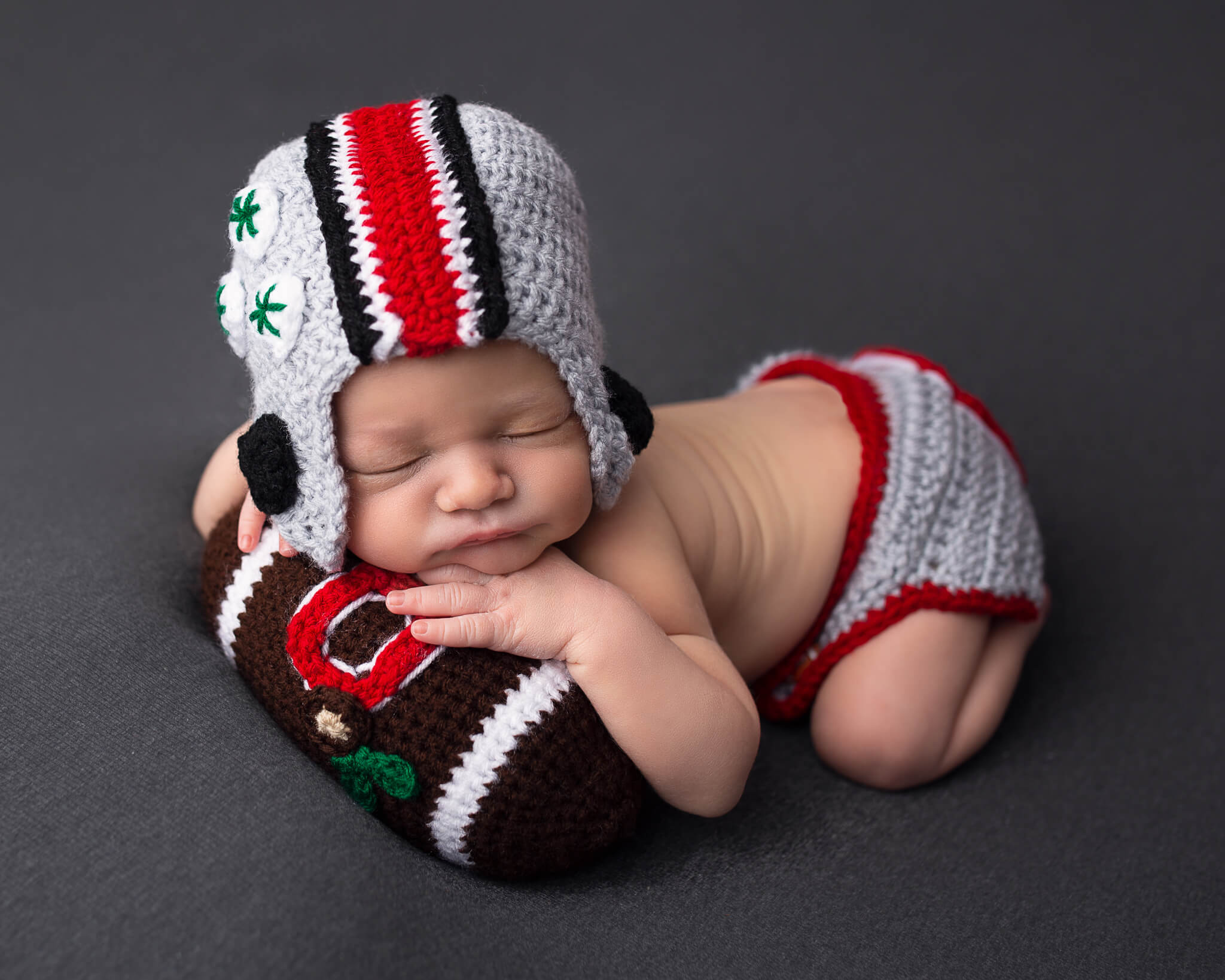
Credit: kendrahdamisphotography.com
Silk
Silk is an excellent fabric choice for newborn clothing. This natural fiber offers unparalleled softness and comfort. Many parents prefer silk for their babies due to its luxurious feel and several health benefits. Let’s explore why silk is a top choice for your little one’s wardrobe.
Smooth And Gentle
Silk feels incredibly smooth against the skin. Newborns have delicate, sensitive skin that needs gentle care. The fine threads of silk create a soft surface. This minimizes friction and reduces the risk of skin irritation. Your baby will feel cozy and comfortable in silk clothing. The smooth texture also makes it easier to dress and undress your baby without causing discomfort.
Hypoallergenic Properties
Silk is naturally hypoallergenic. It repels common allergens like dust mites and mold. This makes it an ideal fabric for babies with sensitive skin or allergies. Silk’s hypoallergenic properties help keep your baby free from rashes and skin irritations. Parents can feel confident that their baby’s skin is well-protected. Silk is a safe and healthy choice for newborns.
Linen
Linen is a natural fabric made from the fibers of the flax plant. It is known for its strength and natural beauty. Linen has a long history and is one of the oldest fabrics used by humans. For newborn clothing, linen offers several benefits that make it an excellent choice for your baby’s wardrobe.
Breathability
Linen is highly breathable. This means it allows air to pass through, keeping your baby cool. Babies can easily overheat, so breathable fabrics are crucial. Linen absorbs moisture and dries quickly. This helps to keep your baby’s skin dry and comfortable.
Durability
Linen is one of the strongest natural fibers. It can withstand many washes and still look good. This is important for newborn clothing, which needs frequent cleaning. Linen becomes softer with each wash, making it more comfortable over time. Its durability means you can pass down linen clothes to future siblings.
| Feature | Benefit |
|---|---|
| Breathability | Keeps baby cool and comfortable |
| Durability | Lasts through many washes |
Choosing linen for your newborn’s clothing ensures comfort and longevity. It’s a smart choice for any parent.
Modal
Modal is a popular fabric choice for newborn clothing. Known for its exceptional softness and strength, this semi-synthetic fabric is derived from beech tree pulp. It offers a luxurious feel while being highly durable, making it perfect for delicate baby skin.
Softness And Strength
Modal is renowned for its unmatched softness, making it ideal for newborns. The fibers are smoother and finer than cotton, providing a silky touch. This softness ensures maximum comfort for your baby, reducing the risk of skin irritation.
In addition to its softness, modal is incredibly strong. Its fibers are resistant to wear and tear, even after multiple washes. This durability ensures that baby clothes made from modal maintain their shape and quality over time. Parents can trust that modal clothing will last through numerous washes and daily wear.
Sustainable Choice
Modal is also a sustainable fabric choice. It is made from beech tree pulp, which is a renewable resource. The production process of modal is environmentally friendly, using less water and energy compared to other fabrics.
Additionally, modal is biodegradable. This means that it breaks down naturally, reducing its impact on the environment. Choosing modal for your newborn’s clothing is a step towards a greener planet. It aligns with the growing demand for sustainable and eco-friendly products.
Here are some key benefits of modal:
- Ultra-soft texture
- High durability
- Environmentally friendly
- Biodegradable
In summary, modal is an excellent choice for newborn clothing. Its softness, strength, and sustainability make it a top contender for parents seeking the best for their babies.
Blends
Choosing the right fabric for newborn clothing is crucial. Blends are popular for their unique combination of features. They offer the softness of natural fibers and the durability of synthetic ones. This makes them an excellent choice for baby clothes.
Cotton-polyester Blends
Cotton-polyester blends are widely used in baby clothes. They mix the softness of cotton with the strength of polyester. This blend is lightweight and comfortable. It helps regulate temperature, keeping babies cozy. The fabric is also breathable, reducing the risk of skin irritation.
Moreover, cotton-polyester blends are easy to care for. They resist wrinkles and shrinkage, making them long-lasting. Parents can wash them frequently without worrying about wear and tear. This convenience is a big plus for busy parents.
Advantages Of Fabric Blends
Blended fabrics offer many advantages. They combine the best properties of each fiber. This means better comfort and durability. Babies need clothes that are gentle on their skin. Blends provide this, along with extra strength and flexibility.
Another advantage is affordability. Blends are often more cost-effective than pure fabrics. This allows parents to buy more clothes without breaking the bank. The versatility of blended fabrics makes them suitable for various clothing types. From onesies to sleepwear, blends are a top choice.

Credit: sewguide.com
Safety Tips
Choosing the right fabric for newborn clothing is crucial. Babies have delicate skin that needs extra care. Ensuring their clothes are safe is a top priority. Let’s look at some safety tips to keep in mind.
Avoiding Harsh Chemicals
Always choose fabrics free from harsh chemicals. Many fabrics undergo treatments with chemicals to enhance color or texture. These chemicals can irritate a newborn’s sensitive skin. Opt for organic cotton or bamboo fabrics. These natural options are gentle on the skin and free from harmful substances.
Checking For Allergens
Newborns can have allergies to certain fabrics. Always check for potential allergens before purchasing. Wool and synthetic fabrics can often cause allergic reactions. If you notice redness or rashes, switch to a different fabric. Stick to hypoallergenic materials to ensure the baby’s comfort and safety.
Caring For Baby Fabrics
Caring for baby fabrics is crucial for your newborn’s comfort and safety. Gentle handling and proper care ensure the clothes stay soft and last longer. This section provides essential tips to keep baby fabrics in the best condition.
Washing Instructions
Always wash baby clothes before first use. This removes any dust or chemicals from manufacturing. Use a mild, fragrance-free detergent to avoid skin irritation. Set your washing machine to a gentle cycle with cold or lukewarm water. Hot water can damage delicate fabrics.
Separate baby clothes from regular laundry. This prevents contamination with harsh detergents or dyes. Hand washing is also an option for delicate items. Avoid using bleach or fabric softeners, as they can be harsh on sensitive skin.
Maintaining Fabric Quality
Dry baby clothes on a low heat setting or air dry them. High heat can shrink and weaken fabrics. To keep clothes soft, you can use dryer balls instead of fabric softeners.
Iron baby clothes on a low setting if needed. Always check the care label for specific instructions. Store baby clothes in a cool, dry place to prevent mildew. Use cedar blocks or lavender sachets to keep moths away.
Inspect clothes regularly for wear and tear. Repair small holes or loose threads promptly. This helps extend the life of the clothes and keeps them safe for your baby.
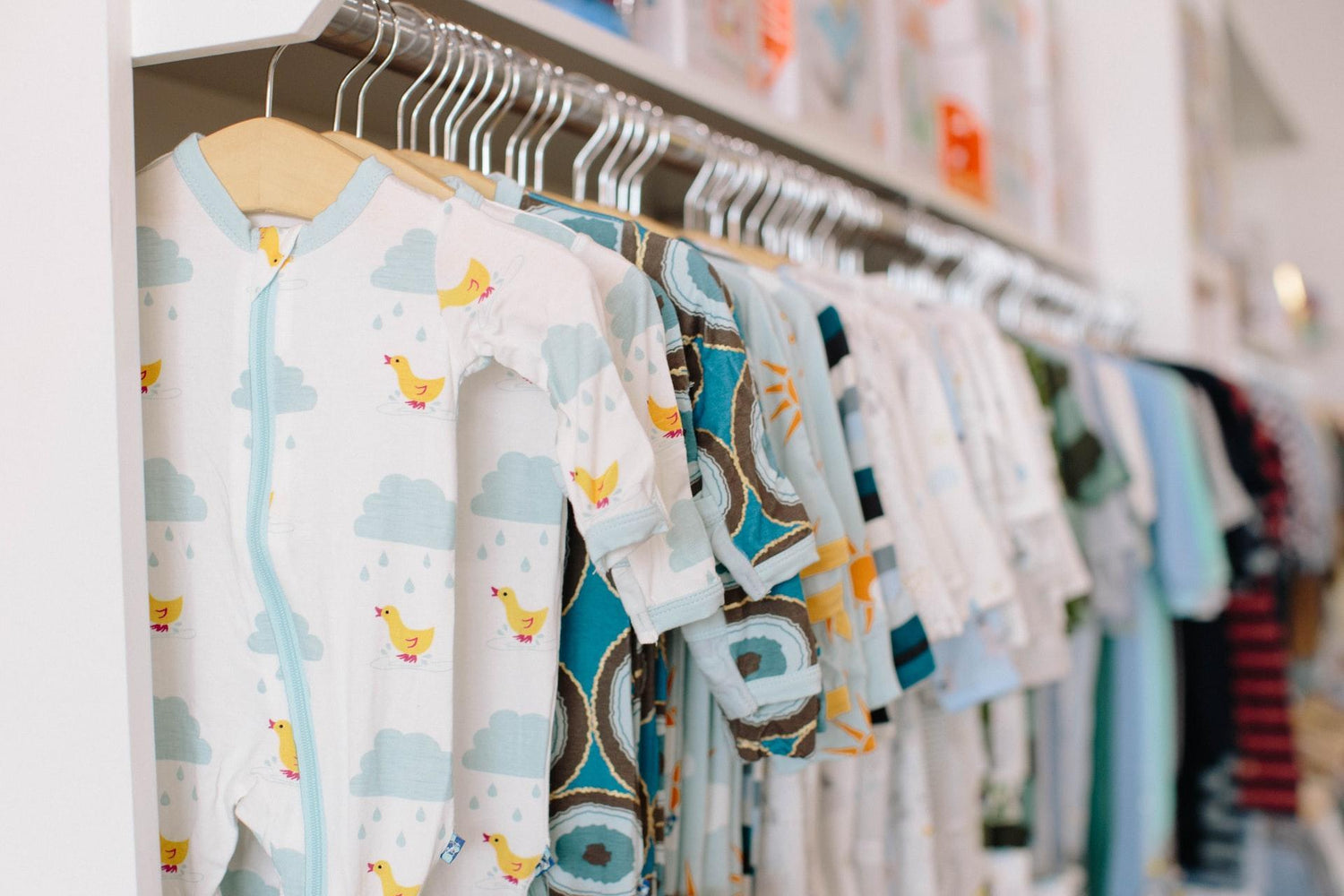
Credit: babymoo.in
Frequently Asked Questions
What Are The Best Fabrics For Newborn Clothing?
The best fabrics for newborn clothing are cotton, bamboo, and organic wool. They are soft and breathable.
Why Is Cotton Good For Newborn Clothes?
Cotton is good for newborn clothes because it is soft, breathable, and hypoallergenic. It is gentle on baby’s skin.
Is Bamboo Fabric Safe For Newborns?
Yes, bamboo fabric is safe for newborns. It is soft, hypoallergenic, and moisture-wicking. Perfect for sensitive skin.
What Makes Organic Wool Suitable For Babies?
Organic wool is suitable for babies because it is natural, breathable, and temperature-regulating. It keeps babies warm and comfortable.
Conclusion
Choosing the best fabrics for newborn clothing is essential. Soft, breathable materials ensure comfort and safety. Cotton and bamboo fabrics are top choices. They are gentle on sensitive skin. Organic options also provide peace of mind. Prioritize quality and comfort for your baby.
Remember, the right fabric makes a big difference. Keep your little one happy and healthy with the best choices. Your baby deserves the best. Happy parenting!



